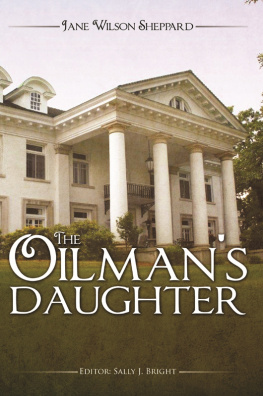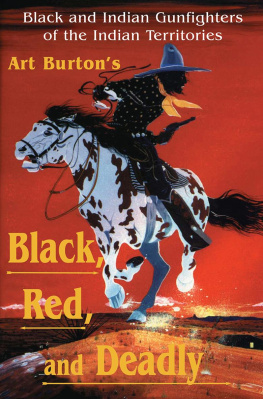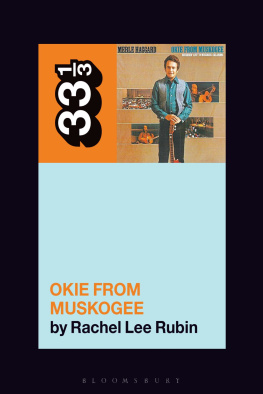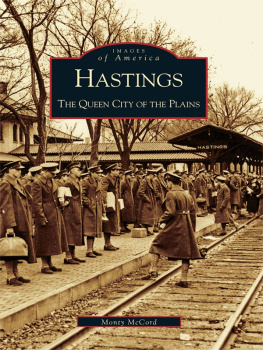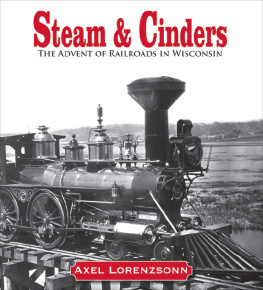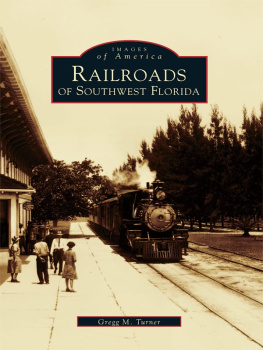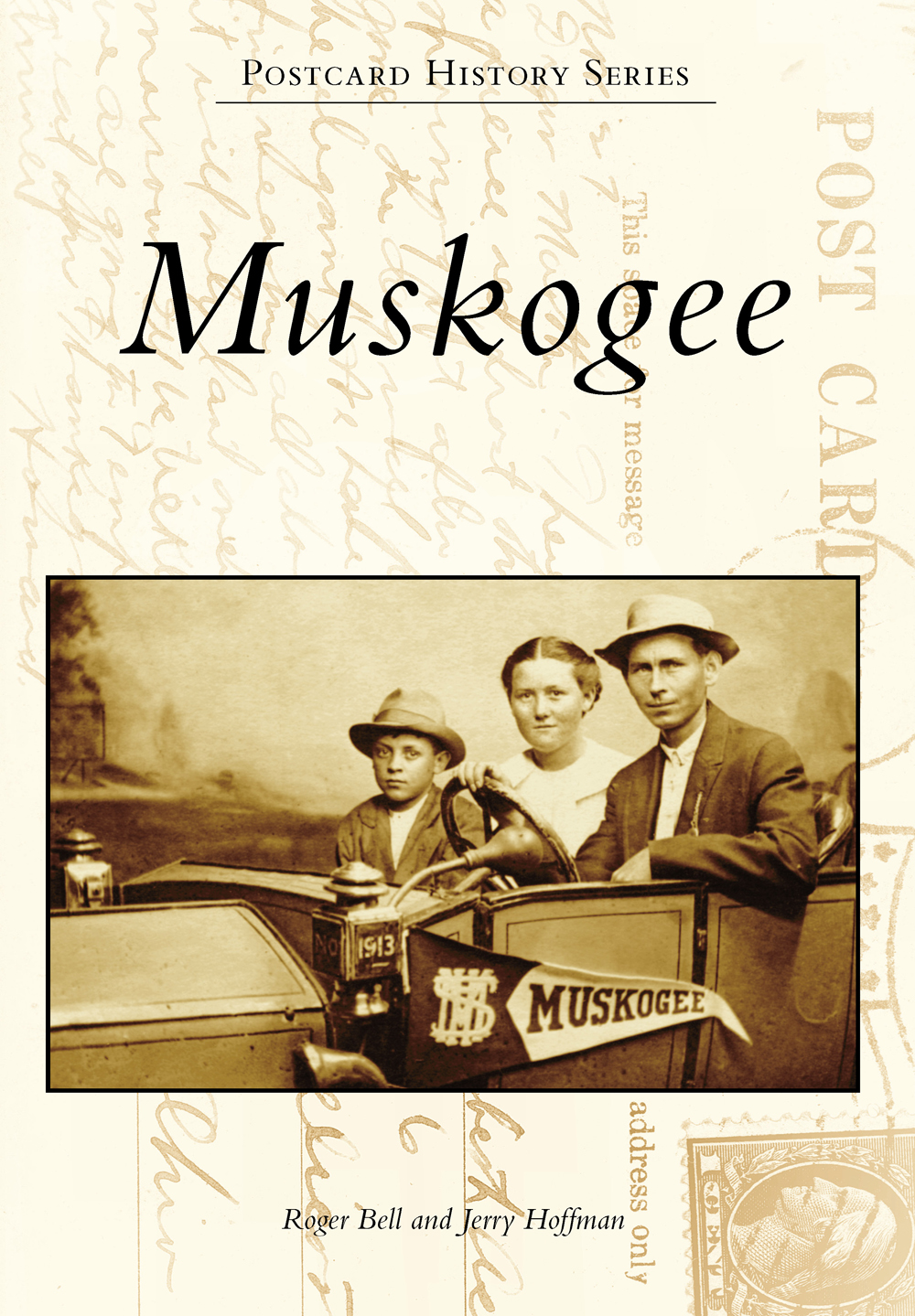
POSTCARD HISTORY SERIES
Muskogee

This postcard was mailed from Muskogee in 1912, during a peak time in the citys building boom and growth. The card was affixed with a unique felt pennant and was meant to humorously promote the city. In this year, the population of the city was estimated to have reached approximately 35,000 residents, which had risen from only 3,500 just 10 years earlier. (Courtesy of Jerry Hoffman.)
ON THE COVER: This real-photo postcard from 1913 is indicated to have been taken at a temporary photographers studio that was set up during the Muskogee Free State Fair. Many citizens at this time were contemplating ownership of their first automobile. By 1916, the city would play an integral part in the formation of the first north-south national highway in the United States, the Jefferson Highway. (Courtesy of Jerry Hoffman.)
BACK COVER: In 1908, the Commercial Club of Muskogee purchased the steamboat pictured in this postcard and renamed it the City of Muskogee. Boosters believed that the boat would strongly promote Muskogees development and spur increased navigation on the Arkansas River. For several years after its purchase, the boat made daily excursions out of its base at a landing in Hyde Park. This postcard was likely a souvenir sold to passengers who made the steamboat trips. (Courtesy of Jerry Hoffman.)
POSTCARD HISTORY SERIES
Muskogee
Roger Bell and Jerry Hoffman

Copyright 2014 by Roger Bell and Jerry Hoffman
ISBN 978-1-4671-1268-0
Ebook ISBN 9781439648902
Published by Arcadia Publishing
Charleston, South Carolina
Library of Congress Control Number: 2014936194
For all general information contact Arcadia Publishing at:
Telephone 843-853-2070
Fax 843-853-0044
E-mail
For customer service and orders:
Toll-Free 1-888-313-2665
Visit us on the Internet at www.arcadiapublishing.com
To those that have called Muskogee homepast, present, and future
CONTENTS
ACKNOWLEDGMENTS
The authors would like to sincerely acknowledge Sue Tolbert, the executive director of the Three Rivers Museum of Muskogee, and her entire staff for their strong and ongoing support in the completion of this book. Additionally, the work and help of several historians were important and vital to the successful completion of the book. They include Barbara Downs, Grant Foreman (deceased), Charles Ledbetter, Linda Moore (deceased), Jonita Mullins, Wally Waits, and C.W. Dub West (deceased).
Finally, and most importantly, we want to express our strongest appreciation to both of our immediate families. Many long evenings were spent away from them while selecting these postcard images and writing the text for this book. Roger Bells wife, Tammy, and children Rachel and Russell, and Jerry Hoffmans wife, Paula, and daughter Amber provided the inspiration, patience, and support that was necessary to allow the book to be completed.
All postcards are courtesy of Jerry Hoffmans private collection.
INTRODUCTION
Muskogee was formed in 1872 when the Missouri, Kansas & Texas (MKT) Railroad established a terminus named Muskogee Station upon the billowing grasslands near to the confluence of the Arkansas, Grand, and Verdigris Rivers in Indian Territory. Soon afterwards, a ragtag settlement formed and a group of progressive pioneers began to slowly cultivate Muskogees growth.
By the end of the 19th century, Muskogee was well established as a progressive city in Indian Territory and seemed poised for a bright future. Then, on February 23, 1899, a large and destructive fire ravaged block after block of the central business district. Overnight, a large number of residents lost their entire way of living, and many wondered whether Muskogee would ever recover from this devastating blow.
Muskogee citizens, though, reacted with vigor and seized the opportunity to build back their town bigger and better. Almost immediately, plans were established to create more substantial buildings and to create ordinances and planning to further establish Muskogee as a First Class City. The sounds of hammers and saws soon echoed throughout the streets of the city, and a new period in the citys history began.
At the dawn of the 20th century and for about 15 years afterwards, Muskogee was thrust into the strongest phase of growth in its history. Spurred on by oil discoveries, new railroads, and increases in federal activity relating to the Five Civilized Tribes, the citys population surged. New buildings began to spring up all over the core central business district, and residential growth exploded onto the east and west sides of the city.
In 1905, investors from Pennsylvania brought electric-traction streetcar service to Muskogee and also established substantial resort parks on the east (Hyde Park) and west (Benson Park) sides of the city. Other first-class improvements to Muskogee soon followed, including an impressive vaudeville theater (the Hinton), the first five-story building (Indianola), and the completion of a large convention hall facility.
Businessmen, entrepreneurs, investors, promoters, politicians, and the like all began to flow regularly into Muskogee, with its great promise of opportunity. Among these new faces was an entrepreneur from Indiana named Charles Haskell, who had been invited to come and see Muskogee in 1901. Upon arrival, Haskell became a great promoter of Muskogee and was successful in obtaining investment funding for the establishment of new railroads and commercial buildings. Haskells efforts attracted the attention of the entire region, and while living in Muskogee, he was elected as the first governor of the new state of Oklahoma in 1907.
Oklahoma statehood further enhanced interest in Muskogee, both nationally and regionally. The city was hailed as one of the fastest-growing communities in the southwestern United States, and by 1912, it had reached a population estimated at almost 40,000, after only being about 3,000 in 1900. Muskogee, which was larger in population than nearby Tulsa during this period, was promoted as The New Metropolis of a New State and was also often referred to as The Queen City of the Southwest.
By 1910, large skyscrapers of eight or more stories soon began to be built all across the downtown area. Many national publications made mention of the great amount of construction activity and growth in Muskogee. A 100,000 club was formed by city promoters in hopes that the community would grow to 100,000 residents.
At about the same time as Muskogees explosion in growth came the popularity of postcards in the United States. In 1903, the Kodak Company introduced the No. 3A Folding Pocket Kodak. This camera and similar ones from competitors were designed for postcard-size film, which allowed photographic images to be taken and then printed on postcard backs for mailing.
In 1907, federal legislation allowed users, for the first time, to write a message on a penny postcard. Prior to that time, only the address was allowed on one side, while the other side could only present a photograph or artwork. At this time, the backs of postcards were divided, allowing space for the address on the right side and space for a written message on the left side. The popularity of postcards soon soared nationwide, and collecting them became a craze in the United States.
Postcards of important buildings, parades, fires, and floods were produced and sent around the nation. Postcards became expressions of pride in communities across the United States and were sold as souvenirs in local drugstores and stationery shops. Some postcards were even enhanced by being colorized for a realistic view, and humorous and promotional postcards also became popular.
Next page



